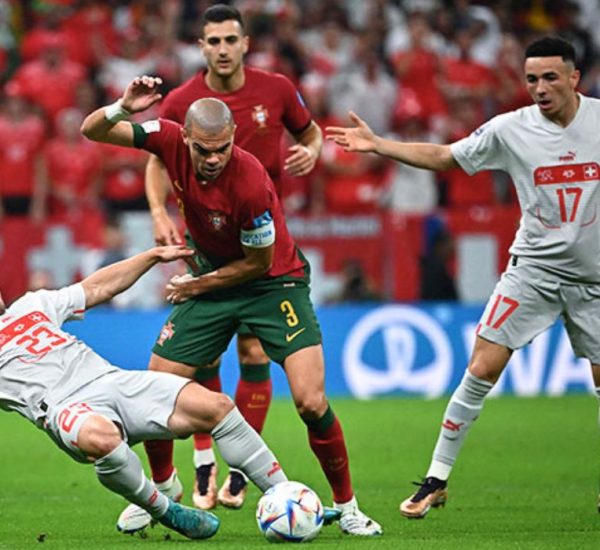Understanding how a match concludes is essential for various individuals involved, such as players, coaches, referees, broadcasters, commentators, and spectators.
Players need to know the rules and scoring system to make informed decisions during the game and strategize optimally. Coaches must understand how a match concludes to prepare their players and devise winning strategies.
Referees must be well-versed in the rules and how the match concludes to ensure fair play and enforce rules.
Broadcasters and commentators also need to know how a match concludes to provide accurate and insightful commentary and analysis to the audience. They must know when to announce the final result of the match.
Additionally, spectators must understand how a match concludes to follow the game’s progress and comprehend the outcome. It enhances their enjoyment and engagement with the sport and allows them to celebrate or commiserate with the players.
Explanation of the two 45-minute halves
In many soccer matches, the game is divided into two 45-minute halves with a 15-minute halftime break in between. The decision to have two halves of 45 minutes each was made by the International Football Association Board (IFAB) in 1886 and has remained unchanged ever since.
The rationale behind having two halves of 45 minutes is to provide players with sufficient rest and recovery time in between halves. The length of the halves is also designed to ensure that the match doesn’t exceed 90 minutes, which is considered an optimal duration for a single game.
Additionally, having two halves allows for a strategic approach to the game. Coaches can adjust their team’s tactics and make substitutions during halftime to improve performance in the second half. This format also allows players to pace themselves and conserve energy for the latter part of the game.
In some soccer competitions, such as knockout tournaments or championship matches, the extra time and penalty shootouts may determine the winner if the game ends in a tie after 90 minutes.
However, the two halves of 45 minutes remain the standard format for most soccer matches worldwide.
Overview of injury time
Injury time, also known as stoppage time or added time, refers to the additional minutes played at the end of a soccer match to compensate for time lost due to injuries, substitutions, or other unforeseen events during the regulation time of 90 minutes.
The referee is responsible for determining the amount of injury time to be added at the end of each half, which is usually communicated to the players and officials through a board displaying the minutes to be added.
The amount of injury time added can vary depending on the extent of time lost during the match, and it is at the referee’s discretion to determine the precise amount to be added.
Injury time is crucial as it provides a fairer representation of the game’s actual length, considering any time lost due to injury or stoppages. It also allows for a more accurate and reliable match outcome, allowing both teams to play a complete and uninterrupted game.
Injury time can be a critical moment in the game as it provides teams with additional time to score and potentially influence the match’s outcome. It can also add to the excitement and drama of the game, particularly in closely contested matches, as teams may push harder to score during the added time.
Discussion of stoppage time
One of the main reasons for the controversy surrounding stoppage time is the subjective nature of the referee’s decision-making process. While referees are expected to use their discretion and experience to determine the appropriate amount of stoppage time, there is often a lack of transparency in the decision-making process, leading to accusations of bias or favoritism.
Another controversial source is how stoppage time is communicated to the players and officials. In some cases, the amount of stoppage time may not be accurately displayed on the board, or there may be delays in communicating the information to the players, leading to confusion and frustration.
Despite these issues, stoppage time is an essential component of soccer, allowing for a fair and accurate representation of the match’s outcome.
It ensures that the game is played for the intended duration, considering any delays or interruptions that may have occurred.
Overview of how extra time is added
Extra time is added to a soccer match when the score is tied after the regulation time of 90 minutes has been played. The extra time, also known as added time or stoppage time, consists of two 15-minute periods played in full regardless of whether a goal is scored during the extra time.
If the score remains tied after the two periods of extra time, the match proceeds to a penalty shootout, which is a method of determining the winner of the match through a series of penalty kicks taken by each team.
It is worth noting that not all soccer competitions use the same format for extra time. For instance, in some knockout tournaments, such as the UEFA Champions League or the FIFA World Cup, an away goals rule may be used to determine the winner of a match in case of a tie. In such cases, extra time may not be played unless necessary to break the tie.
With the start of 2022, the away goal rule has been officially abolished.
Explanation of the two 15-minute halves
The two 15-minute halves are typically separated by a brief break, during which players can receive instructions from their coaches, hydrate, and catch their breath before returning to the field.
If the score remains tied after the two 15-minute halves of extra time, the match proceeds to a penalty shootout, which is a method of determining the winner of the match through a series of penalty kicks taken by each team.
Discussion of how goals scored during extra time can lead to a win
If a team scores during extra time, it does not automatically lead to a win, as the opposing team still has an opportunity to equalize and continue playing.
If both teams are still tied after 30 minutes of extra time, the match proceeds to a penalty shootout to determine a winner. In a penalty shootout, five designated players from each team take turns shooting penalties from a designated spot, and the team with the most successful penalty kicks at the end is declared the winner.
Therefore, scoring during extra time does not guarantee a win, and teams must continue to play strategically to secure a victory.
Importance of knowing how matches end
Knowing how soccer matches end is essential for anyone who loves or wants to follow them closely. It is important to know the rules and regulations that govern the game to understand the outcome of matches and appreciate the efforts of players and teams.
Understanding how a soccer match concludes helps to appreciate the significance of each goal, yellow or red card, and other decisions made by the referee during the game.
Knowledge of the rules helps to follow the action on the field and interpret why players or referees make certain decisions.
Furthermore, knowing how a soccer match concludes helps to understand the tournament or competition format. In knockout tournaments such as the World Cup or the Champions League, the outcome of a match determines which team advances to the next round, and the eventual winner of the tournament.
In addition, knowing how matches end helps to assess the performance of individual players and teams. For example, a team that wins a match in extra time or a penalty shootout may have shown greater resilience or tactical astuteness than the losing team.
Final Thoughts
Soccer is a thrilling and exciting sport, and one of the reasons for this is the unpredictability of how matches conclude. A soccer match can end in various ways, and the excitement lies in not knowing how the game will end until the final whistle.
Whether it’s a last-minute goal, a penalty shootout, or a hard-fought win in extra time, each match’s conclusion brings its unique drama and tension.
The excitement of the match’s conclusion is further heightened during knockout competitions such as the World Cup or the Champions League, where the stakes are high. Every match’s outcome determines which team advances and which team goes home.
In soccer, there is never a dull moment, and the match’s conclusion is where the sport’s passion and intensity are on full display. It is a testament to the skill, determination, and resilience of players who continue to fight until the final whistle, regardless of the scoreline.



